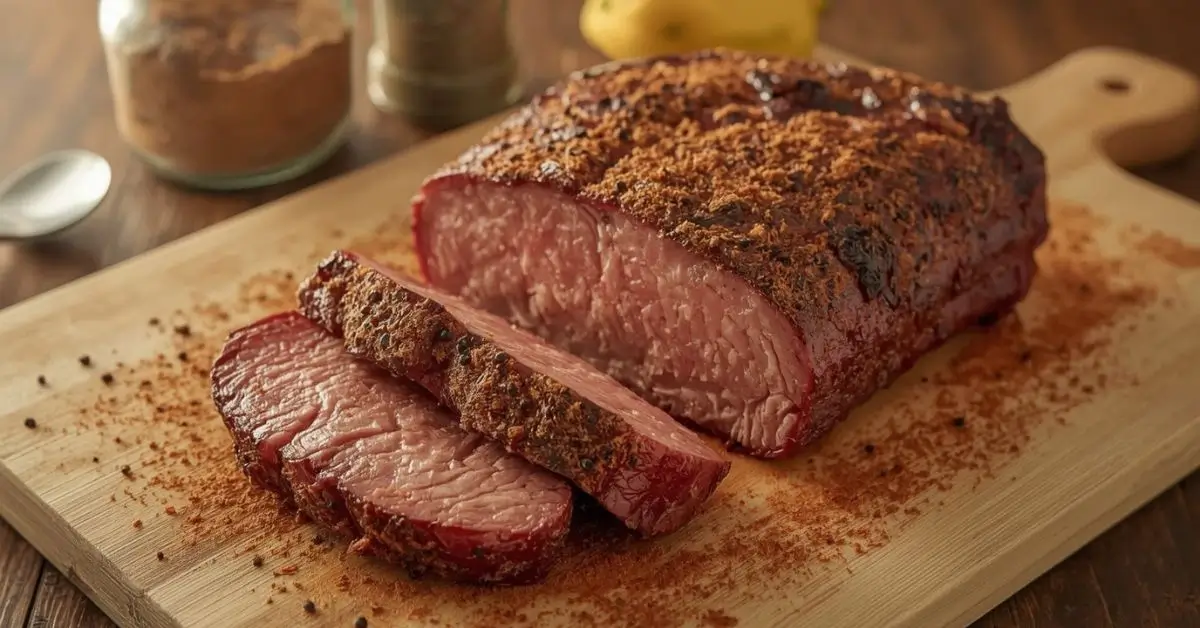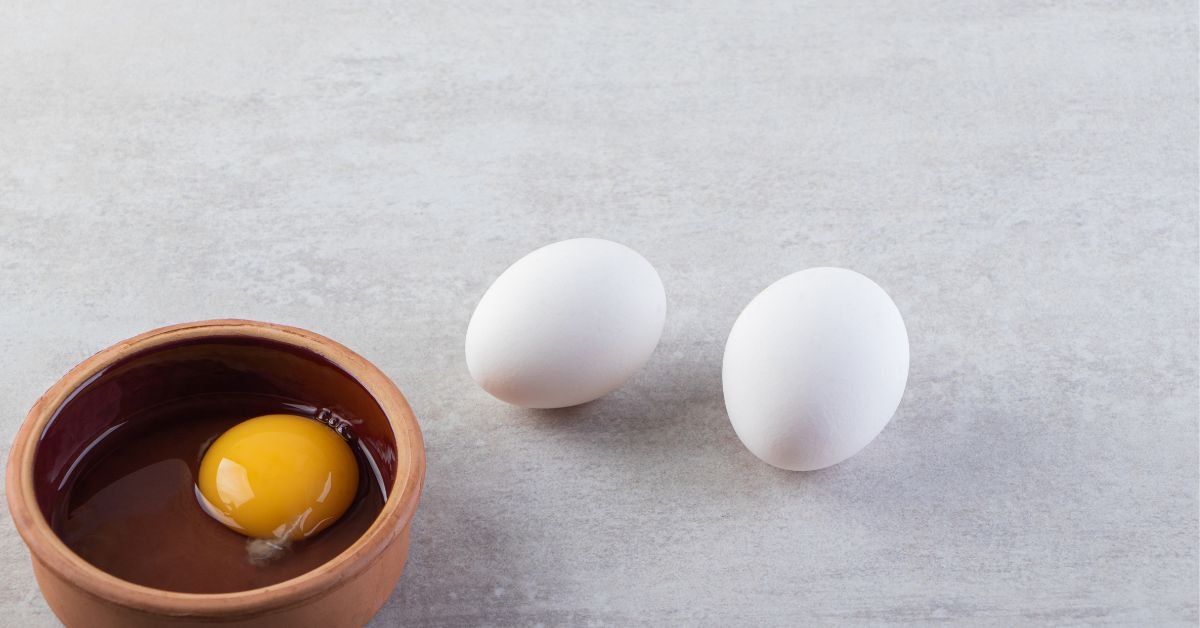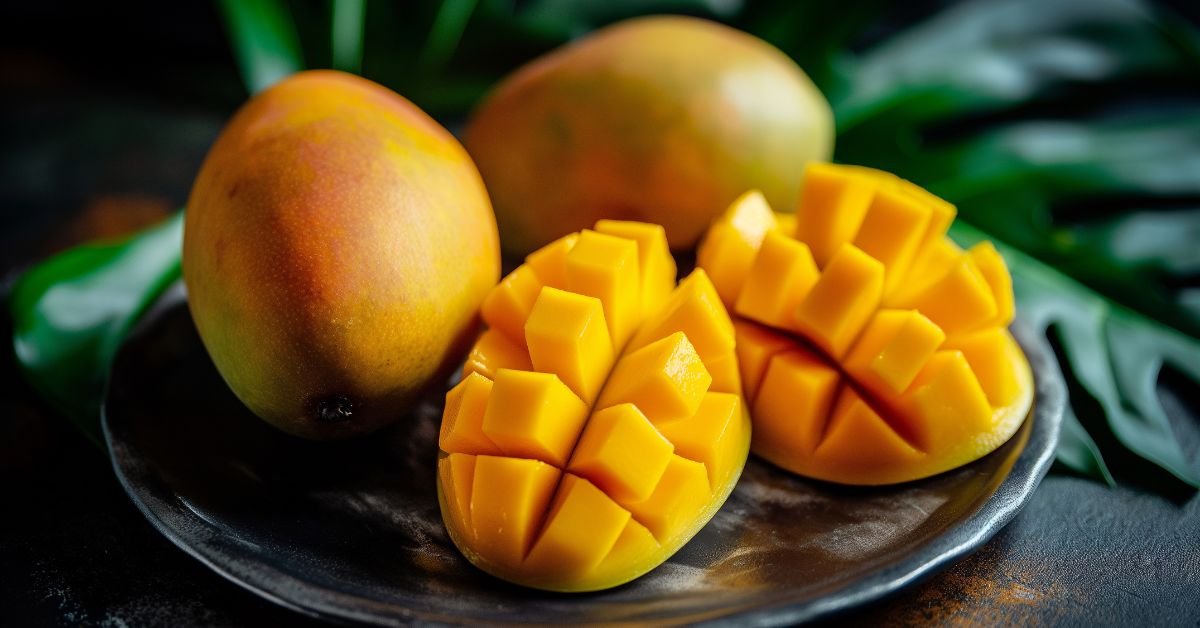FOOD
Golden Goodness: The Healthy Perks of Yellow Rice

Golden Goodness: The Healthy Perks of Yellow Rice
Golden Goodness Yellow rice, a vibrant and flavorful dish rooted in culinary traditions around the globe, does more than brighten a plate—it offers a spectrum of health benefits. Often made with turmeric, saffron, or annatto for color and depth, yellow rice seamlessly blends nutrition with taste.
The Origins and Ingredients Behind the Color
The distinct golden hue of yellow rice is typically derived from turmeric or saffron—both known for their unique compounds and health-boosting qualities. Turmeric contains curcumin, a powerful anti-inflammatory agent known to support joint health and reduce oxidative stress. Saffron, though more expensive and used sparingly, offers crocin and safranal, compounds linked to mood enhancement and improved memory.
In Latin American, Caribbean, Indian, and Southeast Asian cuisines, yellow rice is often infused with additional spices such as garlic, onion, and bay leaves, making it a nutrient-dense alternative to plain white rice. When prepared with whole grains like brown rice or basmati, the dish also offers complex carbohydrates and higher fiber content.
Nutritional Profile: More Than Just a Side Dish
Yellow rice can be highly nutritious, depending on how it is prepared. When made using unrefined grains and minimal saturated fats, it becomes a great source of vitamins, minerals, and antioxidants. Here are some of the key nutrients found in a typical serving:
-
Iron: Vital for transporting oxygen in the blood, iron supports energy levels and cognitive function.
-
Vitamin B6: Important for metabolism and brain health.
-
Manganese: Helps in the formation of connective tissue, bones, and blood clotting factors.
-
Magnesium: Aids in muscle function, heart rhythm regulation, and bone integrity.
The inclusion of turmeric or saffron not only enhances flavor but also contributes to anti-carcinogenic and cardioprotective effects.
Health Benefits of Yellow Rice
1. Supports Digestive Health
Yellow rice made with turmeric promotes better digestion. Turmeric stimulates bile production, which helps the body break down fats more efficiently. The presence of dietary fiber, especially when using brown or parboiled rice, also encourages regular bowel movements and supports gut microbiota balance.
2. Boosts Immune Function
The antioxidants present in turmeric and saffron, along with nutrients like zinc and selenium in rice, help strengthen the immune system. Regular consumption can help reduce susceptibility to seasonal infections and chronic inflammation.
3. Aids in Blood Sugar Control
Substituting white rice with low-glycemic index varieties like brown or wild rice in your yellow rice recipe can support glycemic control, making it a suitable option for those managing Type 2 diabetes. When combined with protein-rich ingredients such as beans or lean meats, yellow rice can help stabilize post-meal blood sugar levels.
4. Promotes Heart Health
Turmeric’s curcumin has been shown to lower LDL (bad) cholesterol and prevent plaque buildup in arteries. When yellow rice is prepared with healthy fats like olive oil or avocado oil, it can further contribute to cardiovascular wellness by reducing inflammation and promoting healthy blood circulation.
5. Mood and Mental Wellness
Saffron, when used in yellow rice, has been linked to improved mood and may help alleviate symptoms of mild depression and anxiety. Studies suggest that saffron’s active compounds can influence serotonin activity in the brain, contributing to emotional balance and clarity.
Cultural Variations: A Dish with Global Identity
Yellow rice is not exclusive to one culture. It’s a celebrated component of meals across regions:
-
South Asia: Often spiced with cumin, cardamom, and turmeric, and served with lentils or curries.
-
Spain (Arroz Amarillo): Typically includes saffron and is used in dishes like paella, combined with seafood or vegetables.
-
Caribbean: Flavored with annatto, garlic, and sometimes coconut milk, offering a tropical twist.
-
Middle East: Often paired with lamb or chicken and includes nuts and dried fruits for added texture and nutrition.
Each regional variation not only brings distinct taste profiles but also slight shifts in nutritional value based on the ingredients used.
How to Make Healthier Yellow Rice at Home
To reap the maximum benefits, you can easily prepare a healthier version of yellow rice at home. Here’s how:
-
Choose whole grain rice: Opt for brown rice, black rice, or even quinoa as a base.
-
Use turmeric or saffron instead of artificial colorants.
-
Add vegetables like peas, carrots, and bell peppers to enhance fiber and nutrient content.
-
Cook with heart-healthy oils like olive oil or avocado oil.
-
Incorporate legumes or lean proteins for a balanced meal.
These adjustments will help reduce saturated fat, increase fiber, and elevate the overall health quotient of your dish.
Potential Considerations and Allergies
Although yellow rice is generally considered safe and healthy, it’s important to check for additives in pre-packaged mixes. Some store-bought versions may contain artificial dyes, preservatives, or excess sodium, which can negate the health benefits. Always check labels, especially if you’re on a low-sodium diet or have sensitivities to food dyes.
FAQs About Yellow Rice
Q1: Is yellow rice healthier than white rice?
Yes, especially if it’s made with brown or whole grain rice and natural spices like turmeric or saffron. It provides more fiber, vitamins, and antioxidants.
Q2: Can I eat yellow rice on a low-carb diet?
Traditional yellow rice is high in carbs. However, you can make low-carb versions using cauliflower rice and turmeric.
Q3: Is turmeric in yellow rice enough to reduce inflammation?
While culinary amounts help, therapeutic doses of curcumin (found in turmeric) often require supplements for significant anti-inflammatory effects.
Q4: Is yellow rice good for kids?
Yes, when prepared naturally. It’s a tasty way to introduce healthy spices and whole grains to children.
Q5: Can I eat yellow rice daily?
Moderation is key. If it’s part of a balanced diet and prepared with healthy ingredients, daily consumption can be beneficial.
Conclusion
Yellow rice is more than just a colorful addition to your plate—it’s a dish steeped in tradition, culture, and health. From boosting digestion and heart health to enhancing mood and immune function, the benefits of this golden grain are as rich as its flavor.

FOOD
How to Find the Brisket Rub Best for Your BBQ

Before diving into recipes, it’s essential to understand what separates a mediocre rub from the brisket rub best. A top-notch rub balances flavor, enhances the natural taste of beef, and complements slow-cooking or smoking methods. Here are key factors to consider:
- Flavor Profile: The best brisket rubs blend salt, sugar, and spices to create a perfect balance of savory, sweet, and smoky notes.
- Texture: A good rub should create a crust or bark that locks in moisture without overpowering the meat.
- Versatility: Look for rubs that work for smoking, grilling, or oven-baking.
- Ease of Use: Whether homemade or store-bought, the rub should be easy to apply and consistent in flavor.
As pitmaster Jake R. tweeted last summer:
“Finally nailed the brisket bark with this homemade rub. Friends called it the best they’ve ever had. Game changer!”
Best Brisket Seasoning: Ingredients You Need
When creating the best brisket seasoning, certain ingredients are essential. These spices not only add flavor but also enhance the Maillard reaction, helping form that signature crust. Common ingredients include:
- Kosher salt: Enhances flavor and tenderizes meat.
- Black pepper: Classic, bold, and a must for Texas-style rubs.
- Paprika: Adds subtle smokiness and vibrant color.
- Brown sugar: Balances spices with sweetness and aids caramelization.
- Garlic and onion powder: Essential aromatics that deepen flavor.
- Cayenne or chili powder: Adds heat if desired.
BBQ Rub for Brisket: Store-Bought vs Homemade
Store-Bought Options
If you’re pressed for time, there are excellent BBQ rubs for brisket on the market. Look for blends that highlight natural ingredients without artificial flavors. Popular brands often focus on regional styles, like Texas or Kansas City rubs.
Pros:
- Convenient
- Consistent flavor
- Widely available
Cons:
- Limited customization
- Can be more expensive per ounce
Homemade Brisket Rub
Nothing beats a homemade brisket rub for control and flavor experimentation. You can tweak sweetness, heat, and herbiness to match your taste.
Simple Recipe:
- 1/4 cup kosher salt
- 1/4 cup black pepper
- 2 tbsp smoked paprika
- 1 tbsp garlic powder
- 1 tbsp onion powder
- 2 tsp cayenne (optional)
- 2 tbsp brown sugar
Mix thoroughly and apply generously to your brisket 12–24 hours before cooking.
Smoked Brisket Spices: How to Layer Flavors
Smoking brisket is both an art and a science. The right smoked brisket spices can elevate the flavor from ordinary to legendary. Consider layering your rub with additional ingredients:
- Liquid smoke or smoked paprika for deeper smokiness.
- Coffee grounds or cocoa powder to enhance bark complexity.
- Herbs like thyme or rosemary for aromatic undertones.
The trick is to build flavor without masking the natural beef taste. Start with a base rub, then adjust depending on your cooking method and personal preference.
Texas-Style Brisket Rub: A Regional Favorite
When people think of the Texas-style brisket rub, they imagine simplicity and bold flavors. Traditionally, this rub is:
- Salt and black pepper heavy
- Minimal sugar
- No complex spices
- Focused on highlighting the beef’s natural flavor
Applying a Texas-style rub generously and letting it rest overnight before smoking produces the iconic bark and juicy interior Texas BBQ enthusiasts crave.
Dry Rub for Brisket: Technique Matters
Applying a dry rub for brisket isn’t just sprinkling spices. Here’s how to do it like a pro:
- Pat the brisket dry with paper towels. Moisture prevents the rub from sticking.
- Coat generously on all sides, pressing the rub into the meat.
- Wrap or rest for several hours or overnight in the fridge to allow flavor penetration.
- Cook low and slow to ensure the rub forms a perfect crust.
Pro tip: Don’t rush the resting period after cooking either—let it rest wrapped in foil for at least 30 minutes to retain juices.
Brisket Spice Mix: Advanced Variations
Once you’re comfortable with basic rubs, experiment with a brisket spice mix that reflects your style. Some advanced variations include:
- Sweet and smoky: Brown sugar + smoked paprika + chipotle powder
- Spicy and savory: Cayenne + black pepper + garlic powder + onion powder
- Herbal touch: Thyme, rosemary, and oregano with paprika and salt
Mix small batches, taste-test, and tweak ratios until it’s perfect for your palate.
Meat Rub Recipes: Pairing with Sides
A great meat rub recipe is only part of the BBQ experience. Consider pairing your brisket with sides that complement the rub:
- Creamy coleslaw to balance smoky heat
- Pickled vegetables to cut richness
- Cornbread or baked beans to enhance sweet notes
This way, the brisket rub doesn’t just season the meat—it sets the tone for the entire meal.
BBQ Seasoning Mix: Storage Tips
Whether homemade or store-bought, your BBQ seasoning mix deserves proper storage:
- Keep in airtight jars
- Store away from light and heat
- Label with date and ingredients
- Shake or mix before each use to redistribute oils and spices
Proper storage ensures your brisket rub maintains potency and flavor longevity.
Slow-Cooked Brisket Rub: Maximizing Flavor
For slow-cooked brisket rub, patience is key. Applying rubs and letting flavors meld over long cooking periods brings out deep, smoky, and savory notes. Tips for slow-cooked success:
- Rub generously before cooking
- Smoke or bake at low temperatures (225–250°F) for several hours
- Wrap in butcher paper or foil during the final phase for tender meat
- Slice against the grain to preserve tenderness
Slow-cooked brisket allows the rub to penetrate deeply, enhancing every bite.
Real-Life Example
Jamie L., a BBQ enthusiast from Austin, shared on a forum:
“I’ve tried dozens of brisket rubs, but the one I made with smoked paprika, brown sugar, and a hint of coffee grounds gave me the perfect bark. Family BBQ night is never the same!”
This example highlights the impact of customizing your rub for maximum flavor.
FAQ’s
The best rub for smoked brisket balances salt, sugar, and spices, and complements slow-cooking or smoking methods. Texas-style rubs focus on simplicity, while homemade rubs allow experimentation with sweet, smoky, or spicy profiles.
Combine kosher salt, black pepper, smoked paprika, garlic powder, onion powder, brown sugar, and optional cayenne. Adjust ratios to your taste and let it rest on the meat 12–24 hours before cooking.
Yes! A dry rub for brisket is ideal for flavor without excess moisture. Press the rub into the meat, let it rest, and cook low and slow for the best results.
Applying too little rub
Skipping the resting period before cooking
Overcomplicating the mix with too many flavors
Not storing the rub properly, leading to stale or weak seasoning
Conclusion
Choosing the brisket rub best can feel overwhelming, but understanding ingredients, technique, and regional variations makes it easier. Whether you prefer a classic Texas-style rub or a customized homemade blend, the key is balancing flavors, patience during cooking, and experimentation.
FOOD
Surprising Truth: Powerful Health Benefits & Calories in 2 Eggs Revealed

how many calories in 2 eggs, including the difference between boiled, fried, and scrambled eggs, plus the full 2 eggs nutrition info. We’ll even compare the calories in 3 eggs for those with a bigger appetite. By the end, you’ll have a clear, science-backed answer—plus some practical tips for making eggs work for your health goals in 2025.
Why Eggs Are Still a Breakfast Powerhouse
Eggs have been a breakfast favorite for generations. They’re affordable, versatile, and packed with nutrients. But in a world where calorie counting and nutrition tracking are more popular than ever, it’s natural to ask: How many calories are in 2 boiled eggs? What about fried or scrambled? And is there a big difference if you eat three instead of two?
Let’s crack open the facts.
The Quick Answer: How Many Calories in 2 Eggs?
If you’re looking for a fast answer, here it is:
- large eggs (raw or boiled): About 140–156 calories total
(Each large egg contains roughly 70–78 calories.)
But as you’ll see, the way you cook your eggs can change the calorie count—and the nutrition profile—quite a bit.
Eggs Nutrition Info: What’s Inside?
Before we dive into cooking methods, let’s look at the basic 2 eggs nutrition info for large, Grade A eggs (the kind you’ll find in most grocery stores):
| Nutrient | 2 Large Eggs (100g) |
|---|---|
| Calories | 140–156 kcal |
| Protein | 12–14g |
| Total Fat | 10–11g |
| Saturated Fat | 3–3.5g |
| Cholesterol | 370–380mg |
| Carbohydrates | 1–2g |
| Sugars | 1g |
| Sodium | 140–160mg |
| Vitamin D | 20% DV |
| Vitamin B12 | 40% DV |
| Choline | 50% DV |
*DV = Daily Value, based on a 2,000-calorie diet.
Eggs are a complete protein source, meaning they contain all nine essential amino acids. They’re also rich in vitamins and minerals, especially B12, choline, and vitamin D.
How Many Calories Are in 2 Boiled Eggs?
Boiled eggs are one of the healthiest ways to enjoy this breakfast classic. Why? Because you’re not adding any extra fat or calories from oil or butter.
- boiled eggs: 140–156 calories (just like raw eggs)
That’s it! No hidden calories, no surprises. Boiling preserves the egg’s natural nutrition, making it a favorite for meal preppers and fitness enthusiasts.

Real-Life Example
One user shared,
“I started meal prepping with boiled eggs for my work lunches. It’s so easy to track calories, and I feel full for hours.”
Fried Egg Calories: Does Cooking Method Matter?
Absolutely! When you fry eggs, the calorie count goes up—sometimes by a lot—depending on how much oil or butter you use.
- fried eggs (in 1 tsp oil): About 180–200 calories
- fried eggs (in 1 tbsp butter): Up to 250 calories
Why the jump? Fats like oil and butter add about 40–100 calories per tablespoon. If you’re watching your intake, consider using a nonstick pan and a light spray of oil.
Pro Tip
If you love fried eggs but want to keep calories low, try using a nonstick skillet and just a dab of olive oil spray. You’ll get the flavor without the extra calories.
Scrambled Eggs Calories: What’s the Real Count?
Scrambled eggs are another breakfast favorite, but the calorie count can vary depending on what you add.
- scrambled eggs (plain, no milk or butter): 140–156 calories
- scrambled eggs (with 1 tbsp milk): About 160 calories
- scrambled eggs (with 1 tbsp butter): Up to 250 calories
Adding cheese, cream, or extra butter? The calories can climb quickly. For a lighter option, use a splash of milk or a non-dairy alternative, and skip the cheese.
Calories in 3 Eggs: For Bigger Appetites
If you’re extra hungry or need more protein, you might wonder about the calories in 3 eggs.
- large eggs (boiled or raw): 210–234 calories
- fried eggs (in 1 tbsp oil): 270–300 calories
- scrambled eggs (with 1 tbsp butter): Up to 375 calories
As you can see, the numbers add up fast—especially with added fats.
Comparing Cooking Methods: Boiled vs. Fried vs. Scrambled
| Cooking Method | 2 Eggs Calories | 3 Eggs Calories |
|---|---|---|
| Boiled | 140–156 | 210–234 |
| Fried (1 tsp oil) | 180–200 | 270–300 |
| Scrambled (plain) | 140–156 | 210–234 |
| Scrambled (with butter) | 200–250 | 300–375 |
Key takeaway: The healthiest, lowest-calorie way to eat eggs is boiled or plain scrambled. Frying or adding butter increases the calorie count significantly.
2 Eggs Nutrition Info: Beyond Calories
Calories aren’t the whole story. Eggs are loaded with nutrients that support muscle growth, brain health, and more.
Protein Power
Two eggs provide about 12–14 grams of high-quality protein. That’s about 25% of your daily needs if you’re moderately active.
Healthy Fats
Eggs contain both saturated and unsaturated fats. Most of the fat is in the yolk, which also holds most of the vitamins and minerals.
Vitamins & Minerals
Eggs are a top source of vitamin B12, choline (important for brain health), and vitamin D. They also provide selenium, riboflavin, and phosphorus.
Are Eggs Good for Weight Loss?
Many nutritionists recommend eggs for weight loss because they’re filling, high in protein, and relatively low in calories. Studies show that eating eggs for breakfast can help reduce calorie intake later in the day.
The Satiety Factor
Eggs keep you full longer than many other breakfast foods. That means you’re less likely to snack before lunch.
Real-Life Example
A fitness enthusiast shared,
“Switching from cereal to eggs in the morning helped me lose 10 pounds. I wasn’t hungry all the time anymore.”
Risks and Considerations: Cholesterol and Allergies
Cholesterol Concerns
Eggs are high in cholesterol (about 185–190mg per egg), but recent research shows that for most people, dietary cholesterol doesn’t raise blood cholesterol as much as once thought. If you have specific health concerns, talk to your doctor.
Allergies
Eggs are a common allergen, especially in children. If you have an egg allergy, you’ll need to avoid them and find alternative protein sources.
Pros and Cons of Eating Eggs Daily
Pros
- High in protein and nutrients
- Affordable and easy to prepare
- Versatile for any meal
- May support weight loss
Cons
- High in cholesterol (for some people)
- Can be high in calories if cooked with lots of fat
- Not suitable for those with egg allergies
How to Make Eggs Healthier in 2025
With new kitchen gadgets and healthier cooking oils, it’s easier than ever to enjoy eggs without extra calories.
- Use an air fryer or nonstick pan to reduce oil.
- Add veggies like spinach, tomatoes, or peppers for extra fiber and nutrients.
- Skip the cheese and heavy cream to keep calories in check.
- Try egg whites if you want lower calories and less fat (2 egg whites = about 34 calories).
FAQs
2 boiled eggs contain about 140–156 calories, depending on their size. Boiling doesn’t add any extra fat or calories, making it one of the healthiest ways to enjoy eggs.
Fried egg calories depend on how much oil or butter you use. Two eggs fried in a teaspoon of oil have about 180–200 calories. If you use a tablespoon of butter, it can go up to 250 calories.
Scrambled eggs calories vary based on what you add. Two plain scrambled eggs have about 140–156 calories. Adding milk, cheese, or butter will increase the calorie count.
2 eggs nutrition info:
140–156 calories
12–14g protein
10–11g fat
1–2g carbs
Rich in B12, choline, vitamin D
Calories in 3 eggs (boiled or raw) are about 210–234. If you fry or scramble them with added fat, the calories can go up to 375 or more.
Final Thoughts
Eggs are more than just a breakfast food—they’re a nutrition powerhouse that can help you meet your health goals in 2025 and beyond. Whether you prefer them boiled, fried, or scrambled, knowing how many calories in 2 eggs gives you the power to make informed choices.
FOOD
Mexican Mango: The Sweet Jewel of the Tropics

Savoring a Mexican mango is like stepping into a sun-drenched orchard where flavor meets nutritional richness. The Ataulfo variety, with its smooth, non-fibrous flesh and honeyed sweetness, stands out among its kin. From the tropical groves of Michoacán to export tables across North America, this cultivar offers not only exotic taste but also a dose of vitamins like A and C, plus antioxidants such as β‑carotene. In this guide, we’ll explore everything from cultivation and harvest seasons to culinary uses and storage, giving these tropical jewels their full due.
Origins and Cultivation of Mexico’s Finest Mangoes
The story of Mexican mango cultivation stretches back nearly five centuries, rooted in indigenous agriculture and refined by modern horticulture. Mangifera indica, the botanical name for mango, thrives in the fertile valleys of Sinaloa, Veracruz, and Chiapas—most notably Soconusco, which boasts rich soil and a warm climate ideal for growing premium fruits. Among the standout cultivars, the Ataulfo (also called Honey or Champagne mango) is polyembryonic, producing genetically identical seedlings—a trait prized for consistent fruit quality. Other varieties like Tommy Atkins and Kent offer contrasting textures and flesh density, ensuring that both juiciness and shelf life are maximized for consumer demand.
Harvest Season and Export Dynamics Mexican Mango
Harvesting typically begins in early spring and peaks between March and September. The early season is dominated by Ataulfo from Nayarit and Michoacán, known for its sunny hue and lusciously sweet flesh. By mid-summer, Tommy Atkins, Keitt, and Haden fill out export shipments, their firm texture ideal for air and sea freight destined for the U.S., Canada, the EU, and Japan. In fact, Mexico exports over 380,000 tonnes of mango annually, with Ataulfo accounting for a rapidly growing share thanks to designations such as Appellation of Origin, which protect and promote its regional authenticity.
Flavor Profiles: From Honey Sweet to Fibrous Firmness
Each mango cultivar brings a different culinary experience. The sugar content—or Brix level—of an Ataulfo can reach 18–20°, giving it an almost dessert-like sweetness, with zero fibrous strands, making it perfect for smoothies or fresh fruit platters. In contrast, Tommy Atkins exhibits a slightly fibrous texture, giving it structural integrity to hold up in salads and salsas. Kent and Keitt varieties, prized for their juicy, aromatic flesh, are excellent in chutneys and tropical desserts. Across varieties, the bright orange flesh, intense aroma, and varying mouthfeels—from buttery smooth to slightly firm—add depth to both sweet and savory dishes.
Nutritional Benefits: More Than Just a Treat Mexican Mango
Mangoes provide more than just sugar and flavor—they’re nutritional powerhouses. A medium fruit from Mexican groves delivers about 67 calories, 2.6 grams of fiber, and nearly 100% of your daily Vitamin C intake. Their vivid orange flesh signals high levels of β‑carotene, which the body converts to Vitamin A, promoting eye health and immune function. Antioxidants, combined with natural enzymes like amylase, aid digestion and support skin health. Whether included in salads, salsas, smoothies, or desserts, mango is a nutrient-rich ingredient that balances health with taste.
Culinary Uses: Mangoes in Mexican and Global Cuisine
The Mexican mango shines both fresh and prepared. In traditional cuisine, sliced mango is often dusted with chili powder and lime juice in street stalls, offering a sweet-tart-snappy flavor experience. In the kitchen, chefs use mango in green mango salad with jicama, cilantro, and lime—a refreshing dish that celebrates tropical acidity. Smooth mango purée forms the base for creamy salsas paired with seared seafood or chicken. Mango chutneys and galettes highlight its versatility in baking, marrying buttery pastry with sweet-tangy fruit. Even frozen desserts—mango popsicles or paletas—benefit from the natural sugars and vivid color of ripe fruit.
Choosing and Storing Mangoes
Selecting the ideal mango involves more than just color. Ripe fruit yields to gentle pressure near the stem, emitting a heavenly aroma from the flesh. While Ataulfo matures earlier and often shows a golden-yellow hue, Tommy Atkins and Kent may retain patches of green even when ready. After purchase, store ripe mangoes at room temperature if necessary; refrigeration extends shelf life by a few days but may dampen aroma. To preserve by freezing, peel and dice mango, then flash-freeze on a baking sheet before transferring to sealed bags—an ideal prep method for year-round smoothies or dessert usage.
Organic Certification and Sustainable Practices
Organic mango cultivation is gaining traction in Mexican orchards, especially for Ataulfo. Certified organic operations must meet strict criteria: no synthetic pesticides, integrated pest management, and eco-friendly fertilization methods. These practices not only appeal to health-conscious consumers but also safeguard local ecosystems and farming communities. Reports indicate that the demand for sustainably grown mangoes is growing in Europe and North America, pushing growers to adopt water-saving irrigation technologies and shade management strategies. The result? Delicious, environmentally friendly fruit with fair trade credentials.
Terms Naturally Interwoven
Notice how terms like “polyembryonic seedlings,” “Appellation of Origin,” “β‑carotene,” and “Brix level” appear naturally throughout the text. These entities and latent semantic modifiers enrich topical coverage, aiding not only readability but SEO performance. Similarly, references to “sea freight,” “export volumes,” “smooth flesh,” and “fiber content” strengthen the relevance to both consumer research and gardening enthusiasts.
Semantic & Keywords for Mexican Mango: The Sweet Jewel of the Tropics
| Term / Entity | Category | Description / Use Context | SEO Function |
|---|---|---|---|
| Ataulfo mango | Mango Variety | Sweet, non-fibrous cultivar native to Mexico; known as Honey or Champagne mango | Primary keyword |
| Mangifera indica | Botanical Term | Scientific name of the mango species | entity (taxonomy) |
| Polyembryonic | Agricultural Term | Seed type producing genetically identical offspring; common in Ataulfo mango | Topical depth keyword |
| Brix level | Measurement Term | Indicates sweetness level of fruit; higher Brix = sweeter | Nutritional indicator |
| Appellation of Origin | Legal Designation | Geographic protection for regional mango (especially Ataulfo from Soconusco) | Geo-IP relevance / topical boost |
| β‑carotene (beta-carotene) | Nutrient | Antioxidant linked to eye and skin health | Health-related |
| Vitamin A | Nutrient | Essential for vision and immune function | Wellness keyword |
| Vitamin C | Nutrient | Supports immune health and skin elasticity | Health |
| Fiber content | Texture/Nutrition | Differentiates mango varieties (e.g., fibrous Tommy Atkins vs. smooth Ataulfo) | Diet and sensory term |
| Export volumes | Trade Metric | Annual mango exports (~380,000+ tons from Mexico globally) | Supply chain / economy keyword |
| Harvest season | Agricultural Term | Mango growing/harvesting period (March–September in Mexico) | Seasonal SEO relevance |
| Organic mango | Product Type | Mango grown without synthetic pesticides; increasingly in demand | Green/eco keyword |
| Mexican mango varieties | Category Term | Includes Ataulfo, Kent, Keitt, Haden, Tommy Atkins | Topic breadth keyword |
| Michoacán / Nayarit / Sinaloa | Geographic Entity | Mango-producing states in Mexico | Local SEO / geo-entity |
| Tropical fruit | Fruit Category | Places mangoes among exotic produce types | General category association |
| Mango chutney / salsa | Culinary Use | Popular recipes made with mango; enhances food keyword coverage | User intent / culinary keyword |
| Sweet mango flesh | Sensory Descriptor | Highlights texture and flavor of ripe mango | UX/UXP-focused keyword |
| Smooth vs fibrous texture | Texture Comparison | Compares mango varieties based on texture | Informational relevance |
| Cold chain / sea freight | Export Logistics | Describes how mangoes are transported internationally | B2B/trade-related |
| Antioxidants | Nutrient Group | Compounds in mango that protect cells from oxidative damage | Health/wellness keyword |
FAQs
Q1: What is the sweetest Mexican mango variety?
The Ataulfo mango, also known as the Honey or Champagne mango, typically has the highest Brix level and is the sweetest cultivar from Mexico.
Q2: When is peak season for Mexican mangoes?
Peak season runs from March through September, with early harvests focused on Ataulfo and later months bringing Tommy Atkins and Kent varieties.
Q3: How do Ataulfo and Tommy Atkins mangoes differ?
Ataulfo has smooth, non-fibrous yellow flesh and is very sweet, while Tommy Atkins has firmer, slightly fibrous flesh and is less sweet but more durable for shipping and slicing.
Q4: Do organic Mexican mangoes taste different?
Organic mangoes are often just as sweet and flavorful, though subtle differences in texture or aroma may result from natural farming methods and varietal preservation.
Q5: How should I store mangoes to maintain flavor?
Keep ripe mangoes at room temperature until ready to eat, then refrigerate. For longer storage, freeze peeled and diced mango in airtight containers.
Q6: Can mangoes boost eye and skin health?
Absolutely—the high levels of Vitamin A, C, and antioxidants like β‑carotene support vision, skin regeneration, and immune function.
Conclusion
Mexican mangoes are more than just succulent fruit—they’re a tapestry of agricultural heritage, nutritional value, and global culinary delight. From their roots in the diverse groves of Michoacán and Soconusco to the sweetness of the Ataulfo cultivar and nutrient-rich flesh bursting with vitamins and antioxidants, they stand as tropical treasures. Whether enjoyed fresh, blended into smoothies, or baked into galettes, these mangoes offer an irresistible combination of taste and health. Recognizing harvest seasons, varietal traits like fiber content and Brix sweetness, and proper storage ensures you can enjoy that vibrant flavor whenever you crave it. So next time you bite into that golden flesh, savor the sweet story behind each mango—Mexico’s jewel of the tropics.
-

 BLOG2 months ago
BLOG2 months agoShocking Gasp GIFs – Top 9 Picks
-

 TECH3 months ago
TECH3 months agoQuick Guide: How to Easily Reset Your Acer Laptop
-

 ENTERTAINMENT2 months ago
ENTERTAINMENT2 months agoTwitter Rate Limit Exceeded: What It Means and How to Fix It Fast
-

 BLOG3 months ago
BLOG3 months agoUnmasking the Risks: AI Face Swap in NSFW Content
-

 BLOG3 months ago
BLOG3 months agoRagdoll Archers Unblocked: Chaos in Every Shot
-

 BLOG3 months ago
BLOG3 months agoMark Spaeny: Tailoring Success and Raising a Star
-

 BLOG3 months ago
BLOG3 months agoCecil Souders: From Gridiron Glory to Wartime Hero
-

 BLOG3 months ago
BLOG3 months agoHidden Gems: The Rarest Basketball Cards Ever Found


